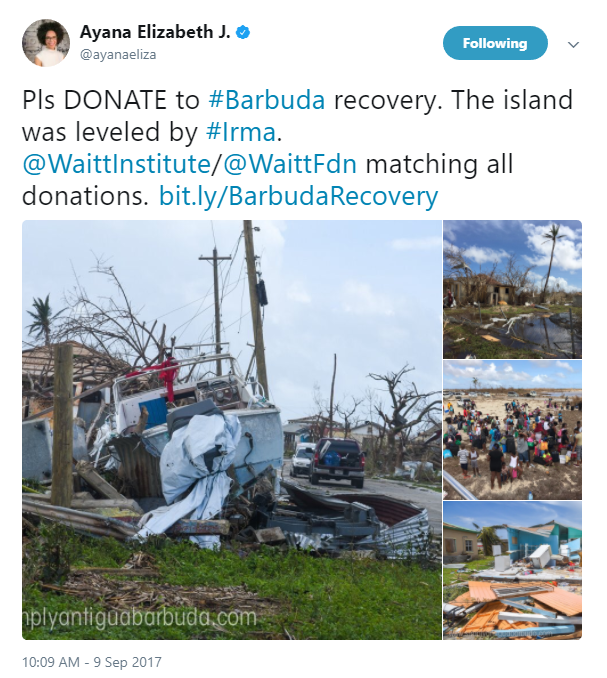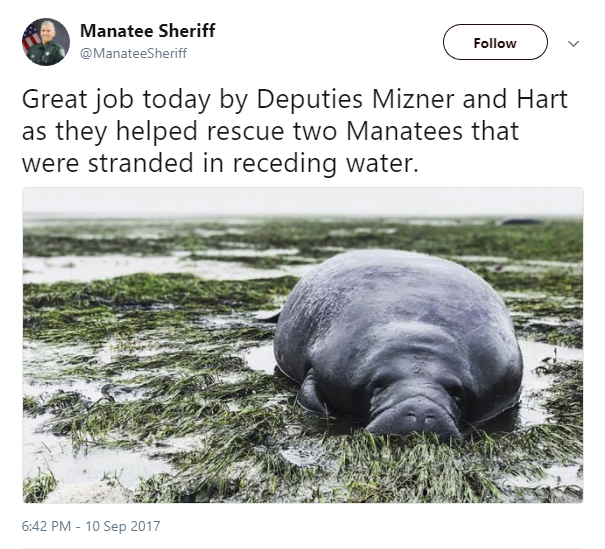Transcript below.
Tag: Giant Isopod
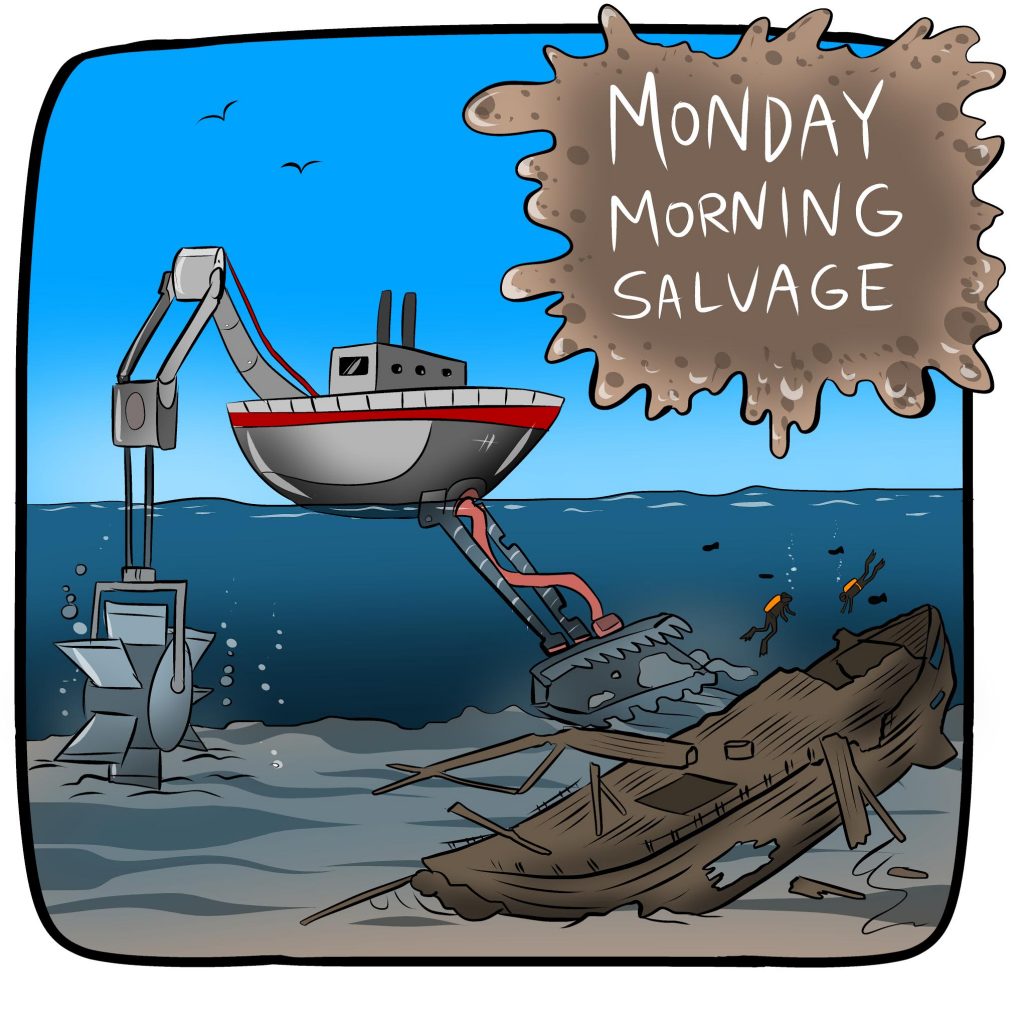
Fog Horn (A Call to Action)
- One week left! The OpenCTD and Oceanography for Everyone has been selected as a finalist in National Geographic’s Chasing Genius Challenge! Please help me win the People’s Choice award by voting for the OpenCTD. Visit http://www.natgeochasinggenius.com/video/776, create or sign into your Chasing Genius account, and click the yellow star to vote on my video. You can vote once per day until September 15.
- “Everyone is homeless. We can’t help each other because everyone needs help.” Ayana Johnson is working to raise funds (and the Waitt Foundation is matching donations, to help the people of Barbuda, where almost every structure on the island was leveled.
Flotsam (what we’re obsessed with right now)
- Yes, I would like to pet a giant isopod, thank you.
- We have a new expedition planned to the Commonwealth of the Northern Mariana Islands. Join us: Marine Ecology and Underwater Robotics in the Commonwealth of the Northern Mariana Islands.
- The Manatee Sheriff sends Manatee officers to rescue stranded manatees in Manatee County.
Like this? Support me on Patreon!
That ambassador is Bathynomus giganteus, the giant, deep-sea isopod.
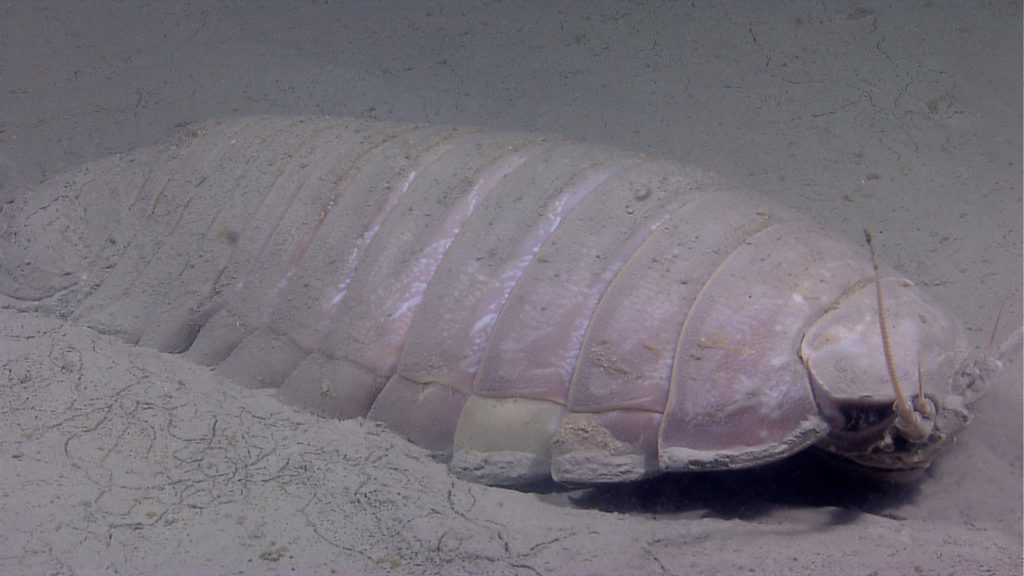
Conservation has long had the concept of Flagship Species—popular, charismatic species that serve as rallying points for conservation awareness and action. Formalized within the framework of conservation marketing, flagship species are focused around particular goals and audiences. Think of the WWF’s Giant Panda, Polar Bears and a thousand different arctic or climate change campaigns, or even the American Bald Eagle, whose decline galvanized the country into action. These animals are iconic. They connect people to species and ecosystems in crisis. They are Flagship Species.
The Giant Deep-sea Isopod is not a flagship species. The Giant Deep-sea Isopod addresses a much more fundamental issue: despite being the largest, most diverse ecosystem on the planet, most people have no direct connection, no frame of reference, for the deep sea.
Read More “Now, More Than Ever, America Needs an Ambassador for the Deep Sea.” »
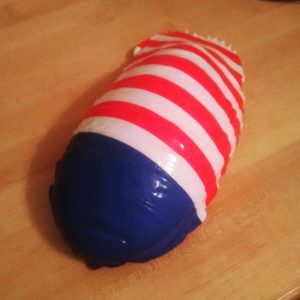 Southern Fried Science loves giant isopods. There are few deep-sea animals more iconic, more charismatic, more weird and wonderful, than the deep-sea isopod. The biggest of the deep-sea isopods, the giant deep-sea isopod, Bathynomus giganteus, is a quintessentially American beast. It dwells in the deep Gulf of Mexico. The bulk of its known range falls within the United States Exclusive Economic Zone. It was first collected by American scientist Alexander Agassiz (though it was formally described by his colleague and collaborator French zoologist Alphonse Milne-Edwards). Tough on the outside, soft on the inside, fiercely independent yet able to work in massive aggregations to consume the bloated carcass of a whale, alternately terrifying and adorable, I can think of no better animal to represent the deep water of the United States better than our own Bathynomous giganteus.
Southern Fried Science loves giant isopods. There are few deep-sea animals more iconic, more charismatic, more weird and wonderful, than the deep-sea isopod. The biggest of the deep-sea isopods, the giant deep-sea isopod, Bathynomus giganteus, is a quintessentially American beast. It dwells in the deep Gulf of Mexico. The bulk of its known range falls within the United States Exclusive Economic Zone. It was first collected by American scientist Alexander Agassiz (though it was formally described by his colleague and collaborator French zoologist Alphonse Milne-Edwards). Tough on the outside, soft on the inside, fiercely independent yet able to work in massive aggregations to consume the bloated carcass of a whale, alternately terrifying and adorable, I can think of no better animal to represent the deep water of the United States better than our own Bathynomous giganteus.
So today, with an historic election looming, we decided it was past time to reflect on the things we love, the things that unite us, the things that fill us with wonder, and call upon Congress to officially adopt the giant deep-sea isopod as the National Deep-sea Animal of the United States.
Read More “We love giant isopods and America should love them too!” »
Picture a pill bug, roly poly, woodlouse, or doodle bug, an animal found under rocks and logs throughout the United States. Now picture an animal similar to that pill bug, but as big as a cat, crawling across the Gulf of Mexico. That is the giant deep-sea isopod.
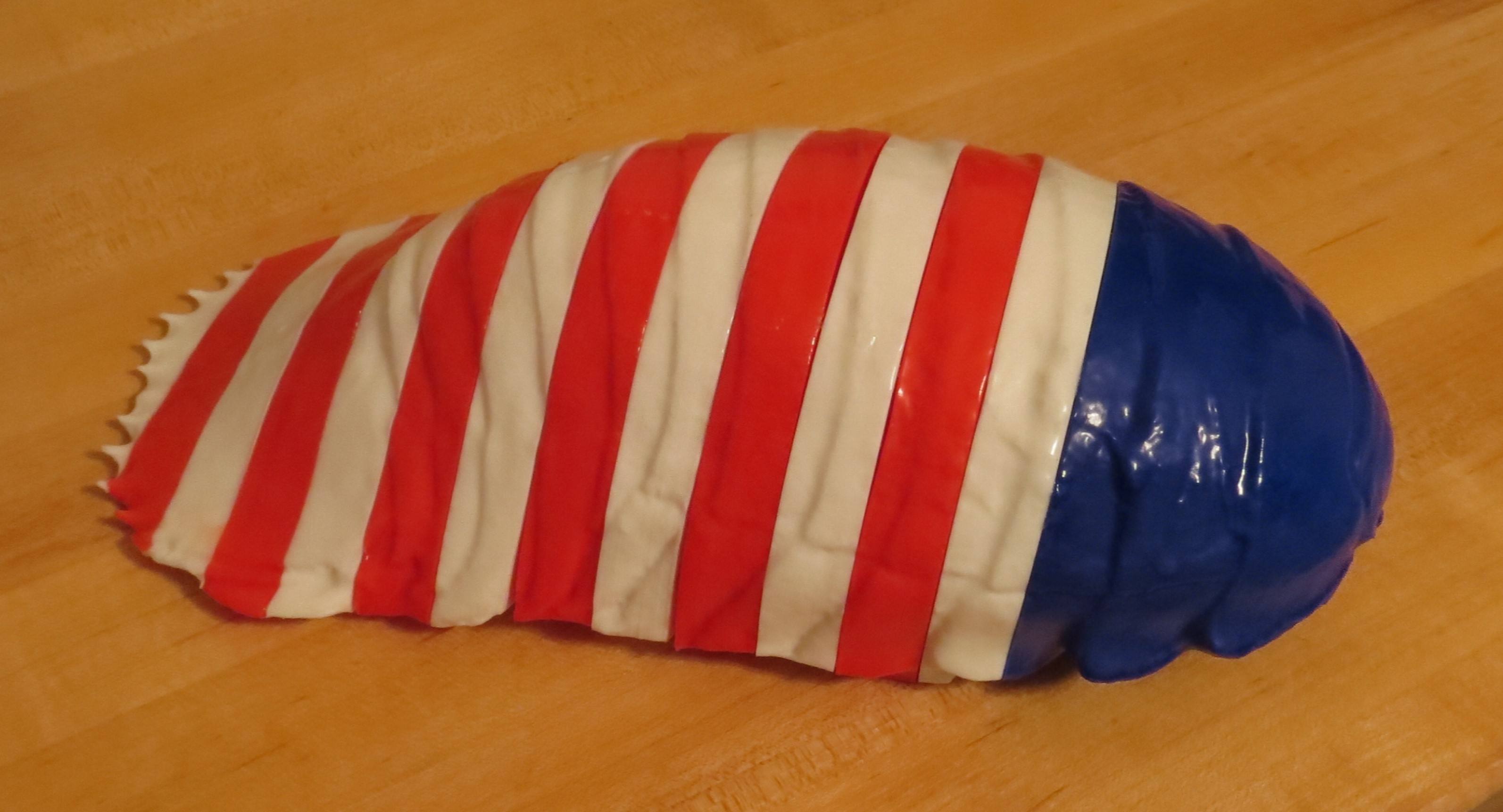
The deep waters of the United States’ Exclusive Economic Zone is home to this large, recognizable animal, which can reach almost 2 feet in length. Since their discovery in the late 19th century, giant isopods have captured the public’s imagination, acting as an Ambassador Species for deep-sea ecosystems. Ambassador Species are important for education, exploration, and conservation as they provide a charismatic icon to help introduce people to new and unfamiliar places.
WHEREAS:
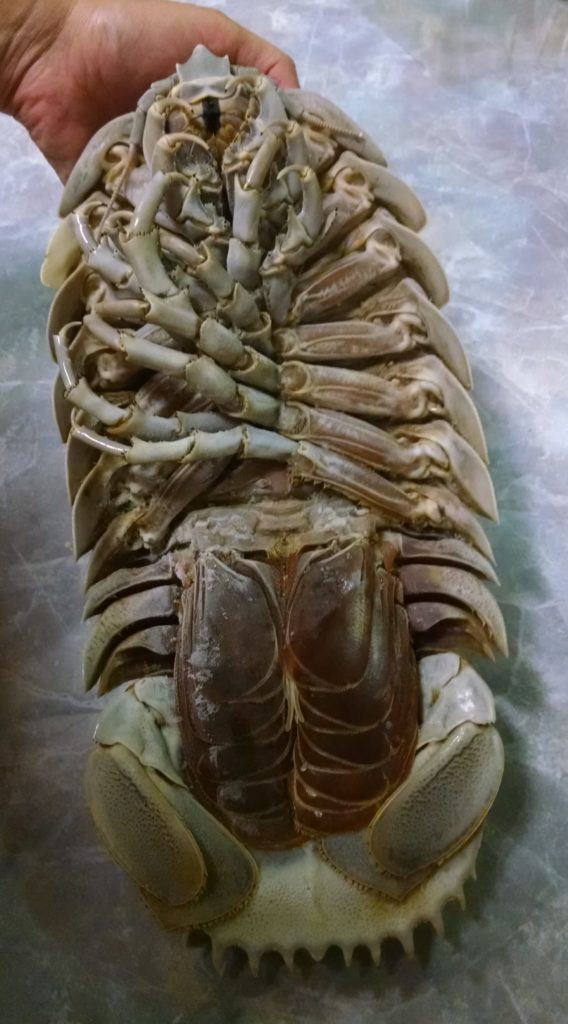
I love giant deep-sea isopods (Bathynomous giganteus if you’re fancy).
I’ve written quite a few articles about giant isopods. Giant isopods were prominently featured in our epic ocean monograph, Sizing Ocean Giants. I’ve even been fortunate enough to observe novel giant isopod behavior in the deep sea. If Southern Fried Science had a mascot, it would have to be the giant isopod.
When I started Scanning the Sea, I knew that a giant isopod would have to be part of the collection. There was just one problem: 3D scanning marine critters is an imprecise art, and you need to start with a very clean specimen. Most of the giant isopods I had access to had been floating in formalin for decades, or came up in pieces, or were preserved in a twisty, roly-poly ball. They weren’t good candidates for scanning.
Read More “The 3D-Printed Giant Deep-sea Isopod You Always Wanted.” »
Today, Craig McClain, along with a massive team of ocean scientists (including me!) published our monumental paper: Sizing ocean giants: patterns of intraspecific size variation in marine megafauna. This massive monograph investigates patterns of size among 25 ocean giants, the biggest, most massive members of their respective taxa. You can probably guess which species I had a hand in reviewing.
httpv://www.youtube.com/watch?v=xtk5t7sSb3s
Along the way, I learned quite a few cool things about the magnificent giants of the deep sea.
1. Giant deep-sea isopods are sexually dimorphic.
Read More “Six things I learned about Giant Isopods while Sizing Ocean Giants” »
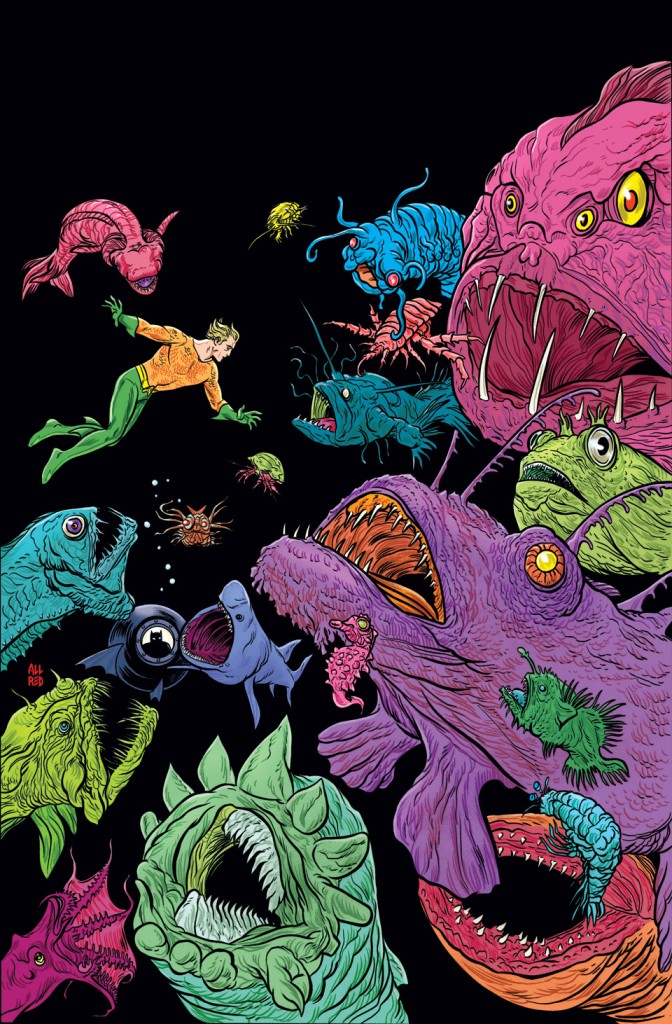
Aquaman. Wow. Artist Mike Allred has seriously outdone himself with this incredible variant cover to Aquaman #31, featuring a 75th anniversary tribute to Batman as well as an incredible pastel array of deep-sea creatures. What truly amazing about this cover is that each one of these animals is a real living denizen of the deep right here, on Earth Prime. Sure, the scale might be a little off, and it’s unlikely that a scale worm could swallow a Bat-thyscaph, but the salient details are uncanny. Join me on a tour of the 18 wonderful animals featured on this sure-to-be epic installment of Aquaman’s ocean-spanning adventures. Today we’re looking at the first three, including one of my all time favorite marine organisms.
Read More “The incredible biodiversity of Aquaman’s variant cover” »
Today marks the end of Geoff Johns’ 25-issue run as lead writer for Aquaman. It is not hyperbole to say that he revitalized the king of Atlantis and helped cast off the stigma of the Superfriends. Aquaman was no longer a one-trick hero floundering about for relevance, trying to find his plaice in the DC Universe. Johns’ Aquaman had depth. The characters were compelling, the stories engaging. And, after more than 2 years, it was clear that this new Aquaman wasn’t just a fluke.
All puns are most definitely intended.
In honor of Johns’ 25 issue run, it’s time to plumb the depths of his ultimate issue and do what I do best: over-analyze a comic book and dredge up as much tenuous symbolism as possible. This is Southern Fried Science and I’m talking about Aquaman, what else would you expect?
The anglerfish symbolize Aquaman’s relationship with Mera
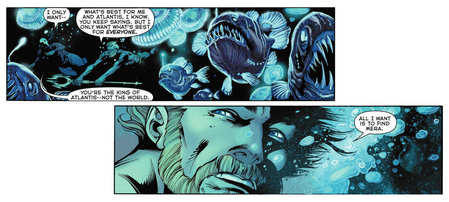
Here we find Aquaman diving deep into the Trench, searching for an army of lost Atlanteans to command. During the course of his dive, we discover that, though Aquaman is fighting to reclaim Atlantis, his one overarching goal is to find his wife, Mera. It is not a coincidence that we see him surrounded by deep-sea anglerfish — Melanocetus johnsonii to be precise. In many ways, the life-history of the anglerfish mimics Aquaman’s relationship to Mera.
Read More “A deep-sea ecologist over-analyzes Aquaman #25” »
